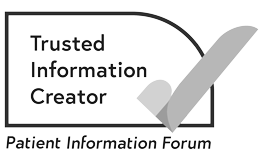Causes and risk factors of Hodgkin lymphoma
The causes of Hodgkin lymphoma are mostly unknown. But some things may increase your risk of developing it.
What are risk factors?
Doctors do not know exactly what causes Hodgkin lymphoma. But some things may increase your risk of developing it. These are called risk factors.
It is important to remember that having these risk factors does not mean you will get lymphoma. Many people affected by lymphoma do not have any risk factors.
If you are worried about lymphoma and would like to talk to someone, we are here. You can:
- Call the Macmillan Support Line for free on 0808 808 00 00.
- Chat to our specialists online.
Age
The main risk factor for cancer is older age. Hodgkin lymphoma is more common in people over 70. But it can happen at any age. It is 1 of the most common cancers in people in their teens and early 20s.
Infection
About 4 in 10 or 40% of Hodgkin lymphoma cases in the UK are caused by the Epstein Barr virus (EBV).
EBV is the virus that causes glandular fever. It is very common in the UK. Almost all adults have had this infection. It does not usually cause serious illness and very few people develop lymphoma because of it.
Lymphoma is not infectious and cannot be passed on to other people.
A weakened immune system
If your immune system is weak, you have a higher risk of developing lymphoma.
Conditions such as HIV can weaken the immune system. We have more information about lymphoma and HIV.
Drugs called immunosuppressants also weaken it. Some people need this type of drug after an organ transplant or to treat auto-immune disease.
Having a close relative with lymphoma
People who have a parent, brother or sister with lymphoma have a higher risk of developing Hodgkin lymphoma. The reason for this is not known. It may be because there is a genetic change that runs in families. Or it could be because family members tend to have the same lifestyle.
This risk is very small. Most people who have a close relative with lymphoma will not develop lymphoma.
Related pages
Auto-immune disease
Auto-immune diseases develop when the immune system attacks healthy body tissue by mistake. Several auto-immune diseases can increase the risk of Hodgkin lymphoma. These include:
- sarcoidosis
- Sjogren’s syndrome
- rheumatoid arthritis
- systemic lupus erythematosus.
Doctors do not fully understand why these diseases increase the risk of developing Hodgkin lymphoma. It may be because of the diseases themselves, or because of the treatments used to control them.
Smoking
Smoking may increase the risk of developing Hodgkin lymphoma.
Related pages
About our information
This information has been written, revised and edited by Macmillan Cancer Support’s Cancer Information Development team. It has been reviewed by expert medical and health professionals and people living with cancer.
-
References
Below is a sample of the sources used in our lymphoma information. If you would like more information about the sources we use, please contact us at informationproductionteam@macmillan.org.uk
Follows GA, Barrington SF, et al. Guideline for the first-line management of Classical Hodgkin Lymphoma — A British Society for Haematology guideline. Br J Haematol, 2022; 197, 558– 572. [accessed April 2024].
Fox CP, Chaganti S, McIlroy G, et al. The management of newly diagnosed large B-cell lymphoma: A British Society for Haematology Guideline. Br J Haematol. 2024; 204(4):1178–92. [accessed April 2024].
McKay P, Fielding P, et al. Guidelines for the investigation and management of nodular lymphocyte predominant Hodgkin lymphoma. Br J Haematol, 2015; 172, 32-43. [accessed April 2024].
McNamara C, Montoto S, et al. The investigation and management of follicular lymphoma. Br J Haematol, 2020; 191, 363-381. [accessed April 2024].
National Institute for Health and Care Excellence. Non-Hodgkin’s lymphoma: diagnosis and management. NICE guideline [NG52]. Published: 20 July 2016. Last update Oct 2021. [accessed April 2024].
Date reviewed

Our cancer information meets the PIF TICK quality mark.
This means it is easy to use, up-to-date and based on the latest evidence. Learn more about how we produce our information.
The language we use
We want everyone affected by cancer to feel our information is written for them.
We want our information to be as clear as possible. To do this, we try to:
- use plain English
- explain medical words
- use short sentences
- use illustrations to explain text
- structure the information clearly
- make sure important points are clear.
We use gender-inclusive language and talk to our readers as ‘you’ so that everyone feels included. Where clinically necessary we use the terms ‘men’ and ‘women’ or ‘male’ and ‘female’. For example, we do so when talking about parts of the body or mentioning statistics or research about who is affected.
You can read more about how we produce our information here.





